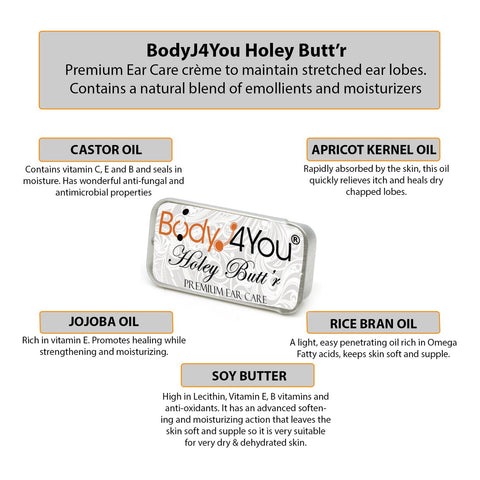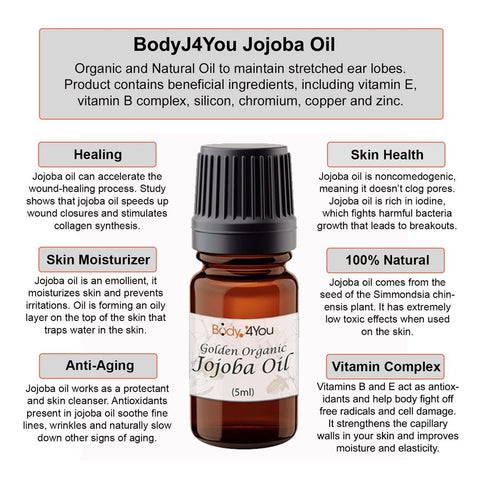
What To Know Before Getting a Lip or Labret Piercing
Maybe you were graced by a touch of class upon passing someone with a Monroe labret piercing or enchanted by a Medusa piercing in the delicate dip above their lips and the idea of getting one too excited you. Labret piercings bring out the beauty of the mouth and can be combined in so many ways to complement your unique style.
However, they are not for the faint of heart. As with all piercings, they come with risks. Oral piercings in their own right have a different kind of process and care than other external piercings. Knowing of these risks beforehand and educating yourself on the process will help you to take precautions to minimize them. In this article, we will cover the different kinds of labret / lip piercings, the processes, and care.
What is a labret piercing?
Any piercing within the mouth region is a labret. “Labret derives from the Latin word labrum, meaning “lip”, explains Angel, Author of the Piercing Bible. Though some use the term only for the center piercing placement under the bottom lip. After the ear and nose, lip piercings are one of the most popular piercings in traditional cultures around the world.
What's the difference between a lip and labret piercing?
There really is no difference other than personal preference of what term people prefer to use.
What is the oldest labret piercing recorded?
 (Nunivak Island, Alaska 1929. Beaded Labrets. Edward S. Curtis Collection (Library of Congress))
(Nunivak Island, Alaska 1929. Beaded Labrets. Edward S. Curtis Collection (Library of Congress))
Labrets are thought to have been "worn as early as 3,000 to 4,000 years ago among a number of Native American tribes, including many Northwest coast Indians, such as the Tlingit, Haida, Chugach, Inuit, and Tsimshian, among whom the labret was often a sign of status", states Demello, author of The Encyclopedia of Body Adornment.
She explains that "labrets were commonly worn among a number of Northwest Native American tribes, as well as ancient Mesoamericans like the Mayans and the Aztecs. A number of African tribes also wear lip plates in large stretched lip holes. The Dogon of Mali and the Nuba of Ethiopia were two tribes which practiced lip piercing and wore rings, rather than labrets or lip plates".
Pure gold labrets have been found among the ancient Aztec and Mayan ruins in the shape of serpents, jaguars, and other animals. These elaborately sculpted ornaments were for only the elite. Among other tribes they were worn as part of initiation rituals, to mark rank, or simply for decoration.
What types of labret piercings are there?
There are many different labret piercing variations:
- Lower Lip Side Placement (Snakebites if double)
- Lower Lip Center Placement (Labret)
- Upper Lip Side Placement (Monroe, Madonna, or Chrome Crawford)
- Upper Lip Center- Philtrum= anatomical term (Medusa, Divot, and Upret)
Questionable / Not Recommended Variations:
- Through the Lip- (transverse or horizontal) in the questionable category due to the type being subject to rejection or migration because of the softness and motion of the area. Requires full pouty lips.
- Smiley, Scrumper, or Frowny- All terms for the same piercing of the upper frenulum that attaches the center of the lip to the gums. These piercings can cause excessive irritation and erosion in teeth and gums. Migration and rejection are obvious risks.
- Cheek Piercing, or Dimple- "that region of the face contains a host of significant structures, including blood vessels, nerves, and the parotid duct (a conduit for a component in saliva). Piercing into any of these can be disastrous", Angel explains. Her own unfortunate experience led to liquid dripping from her dimple piercings that she ended up having to take out and seal.
- Lowbret- Placed as low as possible inside the bottom lip closer to the jaw. The placement is risky because there is less space for the jewelry and can lead to gum and bone erosion.
What is the best jewelry for lip piercing?
There are four types of labret piercing jewelry:
1. The Labret Stud-- A short barbell with a flat disc (interior) and a small stud or ornament to be worn on the outside
- Made of two or three pieces
- Good for initial piercing jewelry, disc-back works well
- 14 gauge is common to start with
2. Fishtail-
- L- shaped bar with a stud or ornament on the end
- Designed for lower lip piercings (tail would hang down if worn on top lip)
- Must be custom bent or adjusted to your anatomy
- Will cause irritation if not contoured to your mouth
- Good for initial piercing jewelry, may take some experimenting
- Opinion is divided as to which of the two (labret or fishtail) initial jewelry are best to start with
3. Ring-
- Works best for lip piercings on the vermillion border
- If you have a full lip or the piercing is far from the border a overly large ring will be needed
- For initial piercing jewelry, a larger diameter ring must be worn to accommodate swelling
- Tighter fitting rings will have to wait till after healing
- The ring will stay in the center if it is a snug fit, larger rings will fall to one side
- Good for initial piercing jewelry
4. C-Ring or U-Ring-
- Small- diameter circular barbell that is widened so that it is C-shaped or U-shaped depending on your anatomy
- Will conform to your lip and helps to avoid contact with your teeth or gums
- Not recommended for initial piercing jewelry to start
How bad do lip piercings hurt?
Some describe it as less painful than a nostril piercing because the cartilage is thicker on the nose and give it a low vote on the pain scale. However, this is a piercing and there will be some pain, for some more than others.
What should I do to prepare for a lip piercing?
As with any piercing make sure to keep your immune system up before and after getting a new piercing. A healthy dose of sleep, limiting stress levels, and keeping hydrated do wonders.
These piercings are not risk free, however knowing what the risks are and taking precautions helps to minimize any possibilities. If you have a history of gum problems, bad teeth, or any kind of oral infections, this piercing may not be for you. Because the Lymphatic system, mucus membranes, and saliva provide a great defense, infections are not a primary worry. Rather, damage to your gums, teeth, and oral structures from ill-fitting jewelry is a major concern. It is very important to wear jewelry that minimizes the risk of any damage.
When consulting your professional piercer, be sure to go over what jewelry type would be a best fit to start with depending on your anatomy. If you plan to switch between a labret stud or ring jewelry in the future, mention it to your piercer so that they can plan placement accordingly or you may be stuck with one style of jewelry.
If you have an informed caring piercer, they will offer you a downsize policy for labret studs. The initial piercing jewelry will be a bit larger than normal to accommodate for the initial swelling but over time as your piercing heals it will have to be switched out to a tighter fit to reduce the chances of oral damage. Your piercer can help you to prepare for these changes.
Get familiar with your piercing rights and check out the Association of Professional Piercers Know Your Rights Guide.
How long does it take for a lip or labret piercing to heal?
An average of 6 to 8 weeks or longer.
How do you take care of a lip or labret piercing?
Oral piercings require a bit of a different aftercare routine compared to other piercings. Your piercer should provide you with aftercare instructions and recommendations. Swelling should go down after the first week but could last several.
Some things you can do during the first few days of healing to minimize pain and swelling:
- REST- Do your best to not speak or play with your new adornment.
- ICE- Suck on ice chips or small cubes as large ones can be uncomfortable. Make sure they are made with clean water. Try making small cubes out of frozen chamomile tea for an extra soothing experience.
- ELEVATE- Keep your head elevated with a few extra pillows when sleeping or resting. The key is to keep your head above your heart to minimize swelling.
- NSAID's- Over-the-counter nonsteroidal anti-inflammatory drugs can help, make sure to follow the instructions.
- RINSE- Rinsing your mouth with an antibacterial or antimicrobial mouthwash (that does not contain alcohol) for thirty to sixty seconds after every meal and before bed. Up to five times a day. A Saline Rinse can be used instead.
- NEW TOOTHBRUSH- It is smart to get a new clean toothbrush and keep it stored in a clean area.
How can I make my piercing heal faster?
- Eat slowly with small bites
- Cold and frozen foods may soothe and reduce swelling
- Fasting and liquid diets are not a requirement, although some people feel better eating soft or blended foods for the first few days of healing
- Make sure your body is well nourished and hydrated by maintaining a healthy diet and sleep schedule
- Dab a small amount of natural oil such as Jojoba oil around the outside surface hole of the piercing without getting it into the hole several times daily to help moisturize and minimize crust. Tea Tree oil can also be used to help fight infection and keep the "wound" sterile. If using Tea Tree oil, make sure to dilute with a carrier oil such as coconut oil. BodyJ4You's Holey Butt'r also is a great way to keep fresh piercings moisturized.


If you have any anecdotes to share, please leave us a comment! We will add it to this post.
Shop LIP RINGS, LABRET STUDS, and AFTERCARE here: SHOP NOW








